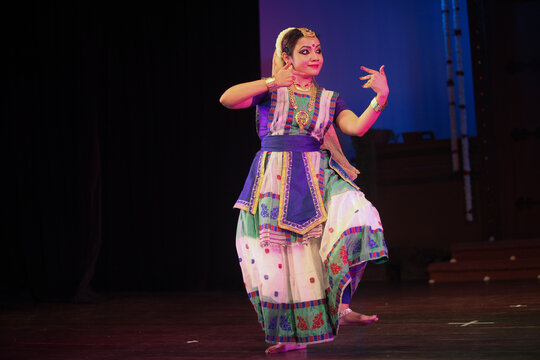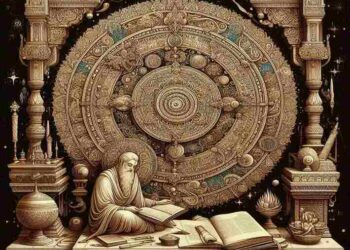Introduction
Classical Indian Drama: Theory & Practice (BA & MA) For more than two millennia, Indian culture has been deeply rooted in the rich and varied heritage of classical Indian drama.
Classical Indian drama, which has its roots in the ancient Sanskrit tradition, encompasses a variety of dramatic styles, each with its own unique language, style, and techniques. It is an expression of India’s rich cultural legacy, fusing aspects of philosophy, dance, music, and literature into shows meant to appeal to the audience’s emotions as well as their intellect.
Studying ancient Indian drama entails comprehending both the plays and the underlying theoretical frameworks that have influenced the genre. Among these is the Natya Shastra, an old work on performing arts credited to Bharata Muni that establishes the methods and aesthetic standards of traditional Indian theater.
Theoretical Foundations of Classical Indian Drama
Classical Indian drama is rooted in ancient philosophical and aesthetic traditions. The theory behind Indian drama is largely influenced by the Natya Shastra, a treatise on performance arts written by Bharata Muni sometime between 200 BCE and 200 CE. The Natya Shastra outlines the essential principles of theatre, including acting, dance, music, and dramatic structure.
1. Natya Shastra: The Cornerstone of Classical Indian Drama
The Natya Shastra is often regarded as the bible of classical Indian theatre. It provides an extensive discussion on the performance of drama, detailing its physical, emotional, and aesthetic aspects. The work covers the following key areas:
- Rasa Theory: One of the most crucial contributions of the Natya Shastra is the concept of rasa—the emotional essence or aesthetic experience that a play should evoke in the audience. There are eight principal rasas: shringara (love), hasya (laughter), karuna (compassion), raudra (anger), veera (heroism), bhayanaka (fear), bibhatsa (disgust), and adbhuta (wonder). These rasas are linked to the bhavas (emotional states) that actors convey through their performance, and their purpose is to stir the audience’s emotions.
- Bhava: Bhava refers to the emotional states or moods portrayed by the actors on stage, and it is through the effective embodiment of bhavas that the desired rasas are created. Bhavas include sattvika bhavas (spiritual or divine emotions), vyabhichari bhavas (transitory emotions), and sthayi bhavas (permanent emotions).
- Abhinaya: Abhinaya refers to expression or acting, specifically the ways in which an actor conveys the bhavas to produce a rasa. Bharata describes four types of abhinaya:
- Angika: Physical expression through gestures, body movements, and facial expressions.
- Vachika: Verbal expression through dialogue and song.
- Aharya: External signs of costume and makeup.
- Sattvika: Internal emotions that are expressed spontaneously, such as trembling, sweating, and changes in the voice.
- Sanskrit Drama Structure: The Natya Shastra also provides a detailed structure for classical drama, which consists of a five-act structure. Each act follows a specific purpose in advancing the plot, with the first act introducing the characters and the conflict, the middle acts developing the narrative, and the final act resolving the conflict.

2. The Role of Music and Dance in Classical Indian Drama
Classical Indian Drama: Theory & Practice (BA & MA) Classical Indian drama is a multisensory experience, with music and dance playing essential roles in the theatrical experience. Unlike Western theatre, where dialogue is the primary form of communication, classical Indian theatre incorporates natyashastra-based dance movements and musical compositions into its performances.
This is seen particularly in Koodiyattam, Kathakali, and Kutiyattam—all of which combine acting, dance, and music to enhance the emotional impact of the play.
- Music: Traditional Indian drama involves the use of ragas (melodic frameworks) and talas (rhythmic cycles) to convey mood and emotion. Different ragas are associated with specific emotional states, and they are used to heighten the rasa during a performance.
- Dance: Classical Indian dance forms like Bharatanatyam, Kathak, Kuchipudi, and Odissi are often intertwined with theatrical performances. These dance forms provide physical expressions of the characters’ emotions and deepen the audience’s connection to the drama.
Forms of Classical Indian Drama
Classical Indian Drama: Theory & Practice (BA & MA) Indian drama developed several distinct forms based on regional traditions and religious practices. While Sanskrit theatre was the most formalized and established form, other regional genres emerged that adapted classical principles to local contexts.
1. Sanskrit Theatre
Sanskrit theatre, as defined by the Natya Shastra, formed the foundation for classical Indian drama. The most notable examples are the Kalidasa’s Shakuntala, Bhasa’s plays, and Bhavabhuti’s works. These plays generally feature grand themes such as mythological stories, royal intrigue, and cosmic battles.
- Kalidasa’s Shakuntala: This play is one of the most famous Sanskrit plays and presents the themes of love, separation, and reunion. Its structure and use of rasa make it a paradigm of classical Indian drama.
- Bhasa’s Plays: Bhasa is considered the earliest playwright in Sanskrit, and his works, such as the Svapna Vasavadattam and Pratijna Yaugandharayana, focus on historical narratives and royal dramas, often incorporating elements of heroism and dharma.
2. Koodiyattam
Classical Indian Drama: Theory & Practice (BA & MA) Koodiyattam is a traditional Sanskrit theatre form practiced in the Kerala region of India. It is one of the oldest surviving performing arts and is known for its rigorous training in facial expressions, mudras (hand gestures), and dramatic movements.
It is typically performed in temples as part of religious festivals. Koodiyattam retains the core principles of Natya Shastra and is performed with classical music and dance, often requiring years of preparation to perfect.
3. Kathakali
Classical Indian Drama: Theory & Practice (BA & MA) Kathakali is another classical dance-drama form that originated in Kerala. Known for its elaborate costumes, makeup, and facial expressions, Kathakali is performed in a highly stylized manner.
It blends music, dance, and acting to narrate mythological stories, particularly those from the Ramayana and Mahabharata. The actor’s face is an essential aspect of Kathakali, as it serves as the primary medium through which emotions are conveyed.
4. Kutiyattam
Classical Indian Drama: Theory & Practice (BA & MA) Kutiyattam, like Koodiyattam, is a form of Sanskrit drama performed in temples of Kerala. However, it is known for its elaborate dialogue delivery and slow-paced movements. Kutiyattam performances combine classical dance, acting, and scripture-based recitations. It is a solo performance or a small group performance that often takes several days to complete.
5. Nautanki and Ramlila
In addition to classical Sanskrit theatre, Nautanki and Ramlila represent popular forms of drama in North India, typically performed during festivals. While Nautanki is a musical theatre form that blends dance, music, and dialogue, Ramlila is the dramatic reenactment of the Ramayana during the festival of Dussehra.
The Practice of Classical Indian Drama
Classical Indian Drama: Theory & Practice (BA & MA) While theory forms the foundation of classical Indian drama, its practical application is where the true artistry lies. The practice involves rigorous training in acting, dance, music, and movement.
Classical drama demands intense physical discipline and a deep understanding of the emotional states of characters. Performers undergo years of training in schools known as gurukulas, where they learn the intricate techniques of abhinaya, rasa, and bhava.
1. Actor Training and Techniques
Classical Indian Drama: Theory & Practice (BA & MA) Training in classical Indian drama is a holistic process, where the actor learns to master:
- Facial expressions: Conveying emotions through the eyes, eyebrows, and mouth is one of the most important aspects of Indian acting.
- Gesture-based acting (Mudras): Each hand gesture in classical Indian drama has a specific meaning and conveys an emotional message.
- Rhythm and Movement: The movement of the body is synchronized with the rhythm of the music and the emotional progression of the play.
- Voice Modulation: The voice is a powerful tool in classical drama, and actors are trained to modulate their voices to suit the mood and tone of the scene.
2. Ensemble Performance
Classical Indian drama often involves ensemble performances, with multiple actors playing different roles, from gods to demons to humans. The interaction between actors on stage is key to creating the desired emotional impact on the audience.

Conclusion
Classical Indian Drama: Theory & Practice (BA & MA) The rich and diverse heritage of classical Indian drama combines dance, music, performance, and literature to create a whole theatrical experience.
For more than two millennia, its theoretical underpinnings, which are based on the Natya Shastra, have offered an organized yet adaptable framework that enables it to adjust to shifting cultural and geographical situations.
The aesthetic, spiritual, and moral fabric of Indian culture has been influenced by traditional Indian play, which ranges from the grandeur storytelling of Sanskrit theater to the regionally specific styles like Kathakali and Nautanki.
Both the traditional methods and contemporary interpretations of classical Indian play contribute to its ongoing relevance in both theory and practice. It provides a deep comprehension of spiritual subjects and human emotions through its emphasis on rasa, bhava, and abhinaya. Classical Indian drama’s rich and dynamic legacy endures as a potent artistic medium that speaks to audiences’ emotions and intellects across time and space.
Read more
FAQ Section
1. What is the role of rasa in classical Indian drama?
Rasa refers to the aesthetic experience or emotional flavor that a play aims to evoke in the audience. Each drama is constructed to invoke one or more of the eight rasas, which are connected to the emotional states of the characters and conveyed through acting, music, and dance.
2. What are the different types of abhinaya in Indian drama?
The four types of abhinaya are:
- Angika: Physical expressions (gestures, body movements, and facial expressions).
- Vachika: Verbal expressions (dialogue, song).
- Aharya: External expressions (costumes, makeup).
- Sattvika: Internal expressions (spontaneous emotions like trembling, tears).
3. How does classical Indian drama differ from Western theatre?
Classical Indian drama incorporates dance, music, and gesture into performances, whereas Western theatre traditionally relies more heavily on spoken dialogue. Moreover, classical Indian drama emphasizes rasa (emotional experience) and bhava (emotional states) as central to the theatrical experience.
4. Why is Koodiyattam considered one of the oldest theatrical traditions in India?
Koodiyattam is one of the oldest forms of Sanskrit theatre, preserved for centuries in Kerala. It is deeply tied to religious and temple festivals, and its highly stylized performances make it a significant part of India’s cultural heritage.
















